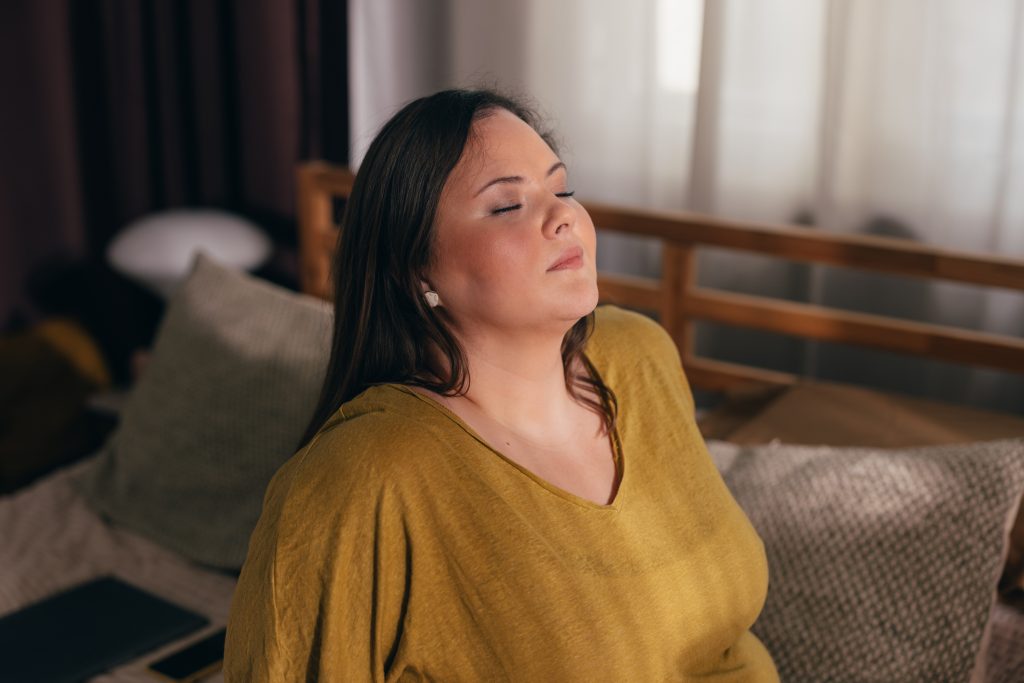Managing Anxiety in a Chaotic World: Simple Tools for Everyday Calm
In today’s fast-paced world, anxiety has become a constant companion for many. Whether it’s due to work stress, personal challenges, or global uncertainty, finding peace amidst the chaos can feel overwhelming. However, the good news is that there are simple, effective tools—both cognitive and somatic—that can help regulate your nervous system and bring a sense of calm to your daily life.
In this post, we’ll explore practical strategies for managing anxiety, including somatic therapy techniques that help reconnect your mind and body for lasting relief.
Understanding Anxiety: A Mind-Body Response
Anxiety isn’t just a mental state—it’s a full-body experience. When we feel anxious, our nervous system shifts into fight, flight, or freeze mode, preparing us to respond to perceived danger.

While this response is useful in short bursts, chronic anxiety can leave us feeling exhausted, disconnected, and unable to focus.
Somatic therapy focuses on regulating the nervous system through body-based techniques rather than just addressing thoughts. By incorporating these approaches, you can shift from feeling overwhelmed to feeling grounded and in control.
Simple Tools for Everyday Calm
1. Grounding Techniques: Getting Back to the Present
When anxiety takes over, grounding techniques help anchor you in the present moment, reducing overwhelming thoughts and bringing awareness to your body.
- 5-4-3-2-1 Grounding Exercise
- Identify 5 things you can see, 4 things you can touch, 3 things you can hear, 2 things you can smell, and 1 thing you can taste.
- This technique helps engage your senses and shift your focus away from anxious thoughts.
- Barefoot Grounding (Earthing)
- If possible, step outside and place your bare feet on grass, sand, or soil.
- This direct connection to the earth has been shown to reduce stress and promote relaxation.
2. Breathwork: Calming the Nervous System
Breathwork is a simple yet powerful tool that directly impacts your nervous system. By focusing on intentional breathing, you can activate the parasympathetic nervous system, signaling to your body that it’s safe to relax.
- Box Breathing (4-4-4-4 Method)
- Inhale for 4 seconds, hold for 4 seconds, exhale for 4 seconds, hold for 4 seconds.
- Repeat for a few minutes to bring immediate calm.
- Extended Exhale Breathing
- Inhale through your nose for 4 seconds and exhale slowly for 6-8 seconds.
- The longer exhale helps deactivate the body’s stress response.
3. Somatic Therapy Techniques: Releasing Anxiety from the Body
Unlike traditional talk therapy, somatic therapy helps process anxiety by engaging the body. Here are some simple somatic techniques to try:
- Tapping (EFT – Emotional Freedom Technique)
- Gently tap on pressure points (such as your collarbone, under your eyes, or the top of your head) while repeating a calming statement like, “I am safe.”
- This technique helps regulate emotions and reduce anxiety.
- Progressive Muscle Relaxation (PMR)
- Tense and release each muscle group in your body, starting from your toes and working up to your head.
- This helps release built-up tension stored in the body.
- Self-Havening (Soothing Touch Therapy)
- Cross your arms and gently stroke your shoulders downward.
- This motion mimics the sensation of being comforted and helps soothe the nervous system.
4. Movement: Releasing Stuck Energy
Anxiety often causes pent-up energy in the body. Moving in intentional ways can help release this tension and restore a sense of balance.
- Shaking (Neurogenic Tremoring)
- Stand up, gently shake out your arms, legs, and body for a few minutes.
- This technique mimics the body’s natural way of releasing stress (just like animals shake after a stressful encounter).
- Yoga & Stretching
- Gentle movement and stretching release tension stored in muscles and help regulate the nervous system.
- Focus on hip-opening poses, as anxiety is often stored in the hips.
5. Sensory Regulation: Using Your Environment to Soothe Anxiety
Your environment plays a big role in how your nervous system responds to stress. Small changes can create a sense of safety and calm.
- Weighted Blankets: The deep pressure provides a soothing effect similar to a comforting hug.
- Soothing Sounds: Listen to calming music, nature sounds, or white noise to reduce sensory overwhelm.
- Aromatherapy: Essential oils like lavender, chamomile, and frankincense can help ease anxiety.
Small Steps, Big Shifts
Anxiety can feel overwhelming, but small, consistent steps can make a huge difference in your ability to self-regulate. By incorporating these tools into your daily routine, you can build resilience and create a sense of calm even in the most chaotic moments.
If you’re struggling with persistent anxiety, working with a therapist trained in somatic therapy can provide deeper relief by helping you process emotions at both the cognitive and physiological levels.
At JoyBrain Counseling, we believe in holistic approaches to mental health—bridging the mind and body for true healing. If you’d like personalized support, feel free to reach out. You don’t have to navigate anxiety alone!
Schedule your free consultation today.
Taking the first steps to start therapy can be intimidating, let one of our skillful and compassionate therapists help you through the process. Today is the best day to start feeling better!

